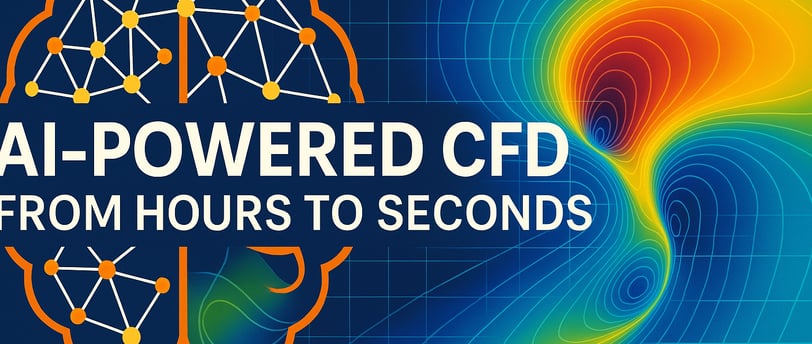Integrating Machine Learning into CFD Workflows
Turbocharge your simulations with AI: discover how neural surrogates and hybrid ML–CFD tricks can slash runtimes from hours to seconds—backed by real-world case studies and physics-informed best practices. Dive in and transform your CFD workflow today!
4/24/20252 min read


Machine learning (ML) is rapidly transforming traditional CFD workflows by introducing data-driven components that accelerate simulations, reduce computational cost, and improve solution accuracy. Rather than replacing established solvers, ML augments key stages—such as mesh adaptation, turbulence closure, and solver initialization—by providing rapid approximations of complex flow fields. This hybrid approach allows engineers and researchers to leverage the physical fidelity of Navier–Stokes solvers alongside the speed of neural surrogates, paving the way for near–real–time design iterations in aerospace, automotive, and energy applications.
Surrogate Models in Action
Surrogate models trained on high-fidelity datasets can instantly predict velocity, pressure, and turbulence fields across parameter sweeps. For example, Li et al. (2020) showed that FNO can quickly learn how to solve the Navier–Stokes equations, speeding up calculations by up to 1,000 times with errors of less than one percent on standard problems like Burgers’ equation and Darcy flow.
Case Study: Cylinder-Wake Forecasting
Renn et al.(2023) applied FNOs to particle-image-velocimetry data of subcritical cylinder wakes (Re = 240–3060), training separate networks per Reynolds number. Their trained models made predictions in milliseconds with errors below 0.1, accurately showing vortex shedding patterns over ten time-steps, which could lead to real-time flow control in bluff-body aerodynamics.
Hybrid ML–CFD Initialization
Rather than fully replacing solvers, hybrid schemes use ML to supply high-quality initial guesses for iterative steps. Caron et al. (2024) trained a neural network on diverse 2D buoyant-plume simulations to predict cell-level pressure corrections. Incorporating these predictions in the pressure-velocity coupling improved the initial guess by 94% and made the first corrector work three times faster, demonstrating great results with various shapes without needing additional retraining.
Physics-Informed Projection Methods
Recent work by Chen et al. (2025) combines Poisson neural networks (Poisson-NN) and wavelet-transform CNN multigrid (WTCNN-MG) with the traditional projection framework. Using specially created data that follows physical rules, the Poisson-NN method made solving pressure problems 5.8 times faster, while WTCNN-MG was 7.0 times faster—both achieved without using DNS data, showing the effectiveness of training with physics-based data.
Best Practices for ML–CFD Integration
Diverse Training Data: Cover the full range of operating conditions (Reynolds numbers, geometries) to avoid out-of-distribution failures.
Physics-Informed Losses: Embed conservation laws and symmetry constraints in the loss function to enforce physical consistency.
Modular Embedding: Insert ML modules as pre- or mid-solver steps, retaining the core CFD code for maintainability.
Hybrid Fallbacks: Combine ML predictions with low-cost physics (e.g., potential flow) in under-sampled regions to safeguard stability.
By weaving ML surrogates and hybrid projection methods into your CFD pipeline, you can cut solution times from hours to seconds—unlocking real-time simulation, control, and optimization for everything from vehicle aerodynamics to energy-system design.